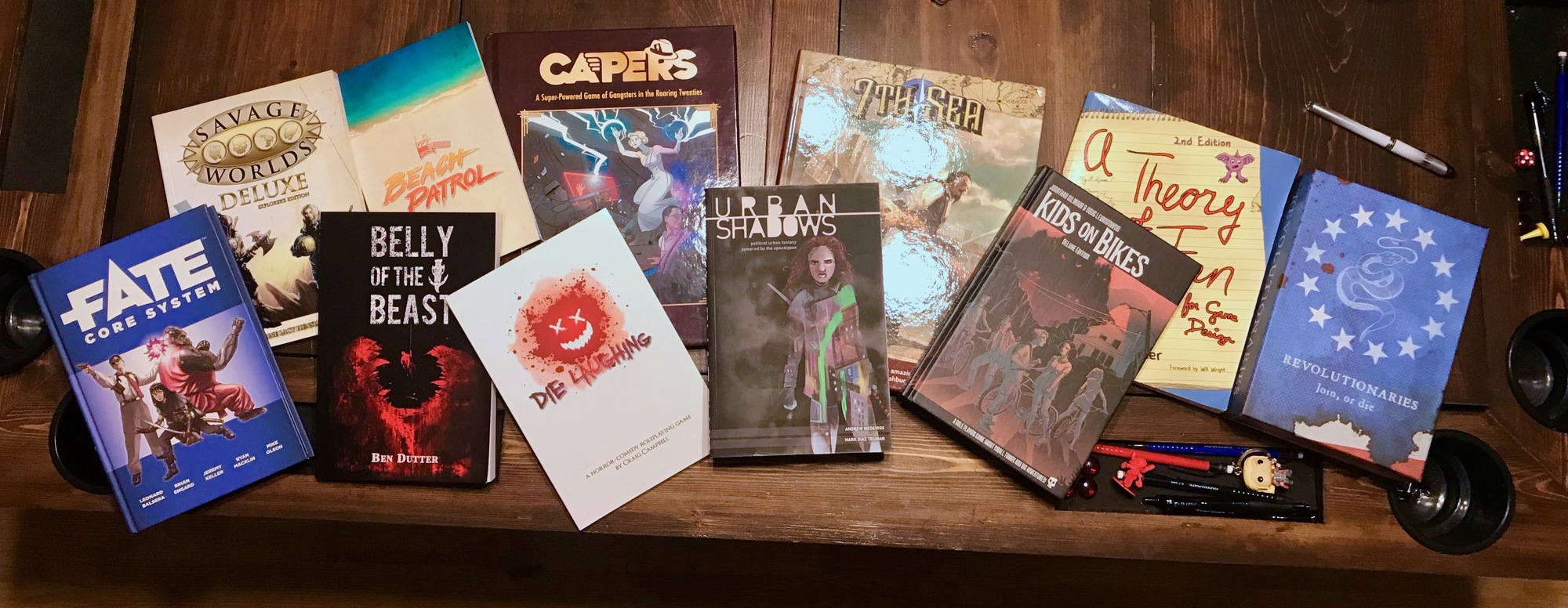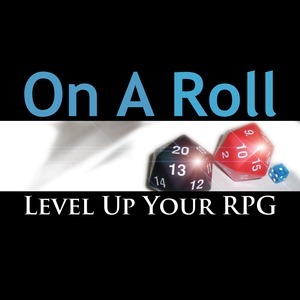Ryan has been developing a tabletop roleplaying game, The Gun Belt for over three years. The game features alien and robot cowboys riding dinosaurs in an interstellar Wild West on a world with no wheels. It is currently in the process of playtesting. This blog explores the process he and his design partner, Ashley, have experienced during that time.

Stephen King is just one of many authors who have said, “If you want to be a writer, you must do two things above all others: read a lot and write a lot.” Working with my design partner Ashley on The Gun Belt helped me to quickly realize this was also true of game design.
Like most types of artists, game developers come from one of two places. The first are developers who have an instinctual, natural grasp and talent for understanding and crafting mechanics. It is a subconscious gift that allows them to just innately feel what works and what doesn’t. Game theory is just part of who they are – they just kind of “get it.” They aren’t really always aware of how or why things work, even as they look at it and simply know it works or doesn’t.
The second are developers who are astutely aware of the “how”s and “why”s of game theory. They know the guidelines and formulas, understanding the orders and principles by which strong game mechanics are crafted while recognizing the actual reasons why other game mechanics are broken, unfair or weak. Some even understand the science well enough to create complex charts graphing the mathematical statistics of the rules, from dice probabilities to basic power balance.
I’m the former. I just kind of sense that something works or something doesn’t. Some mechanics will just “feel right.” Other things just don’t “click.” I have incredibly reliable instincts in this area, which is good. The bad is that it can leave Ashley frustrated as he tries to identify and solve exactly what those problems are in our mechanics.
Obviously, Ashley is the latter kind of designer. Ashley is a librarian of game mechanics. He is always buying new and different roleplaying game books and reading them, constantly looking for some new mechanic or fresh perspective on old methods that he can be inspired by.
This contradiction in artistic approach is actually an incredible blessing for us. When I announce that something just doesn’t work right, he’s able to disassemble the machine and figure out exactly which part of it isn’t functioning properly. Neither of us can do what we do, however, without reading other games.
You have to read the rules of other roleplaying games because you can learn what is popular amongst players right now. You may find yourself really liking how a game approaches a similar topic to what your game addresses. Different game systems present information in different ways, and reading other books may help you decide what format is easiest for you to convey your game information to your players. Pay attention to how information is organized, the order in which things are presented and even consider the narrative styles used for non-mechanical sections (should your game feature an unreliable narrator?).
If you want to be a better game developer, you also have to play other games. Find games that have similar mechanical styles to yours and examine what you like about them (and what you don’t like). Find games that feel completely different than your game and observe what makes them fun (or not fun). Don’t limit yourself by mechanics (which dice are used), by genre, by play style (collaborative or not?) or by publisher size (indie games or Wizards of the Coast?), and ask yourself and your friends what they enjoy about them.
Spend some time looking at the books that other game developers are making – yes, not just the rules, but the actual physical book itself as well. Look at the fonts used and consider if the designers balanced readability with theme. Flip through the book and get an idea for how much art is satisfying to you as a reader. Notice that some books are hardcover, some softcover, some are the size of a regular sheet of paper and others are the size of a digest – decide what you like and what you can afford. You should even order a few RPGs from drivethrurpg.com to see how you feel about their printing services and quality, as print on demand may be how you distribute your game.
Finally, do a bit of research on game theory. I recommend Theory of Fun for Game Design by Raph Koster as a simple but incredibly helpful place to start (it's written for video game design, but I promise, the theory is the same). You can also check out a number of YouTube videos of game design and game theory lectures given by roleplaying game developers at various conventions over the years. And of course, a lot of game developers have blogs where they share what they learned while creating their games.
You’re reading one now.
